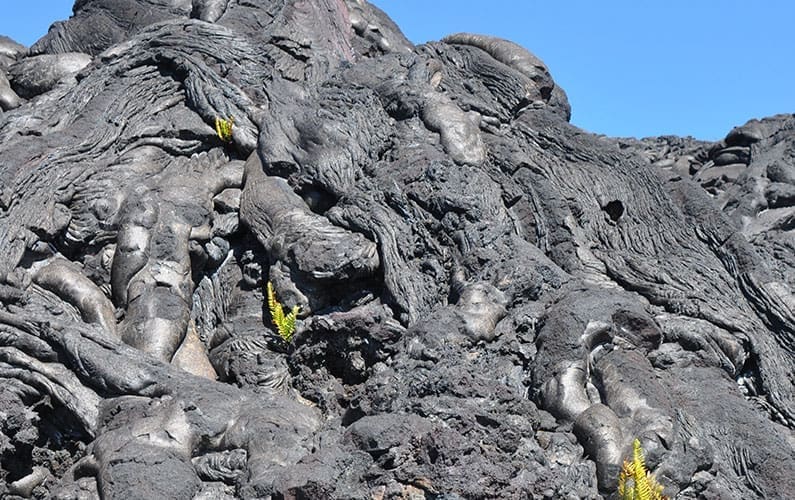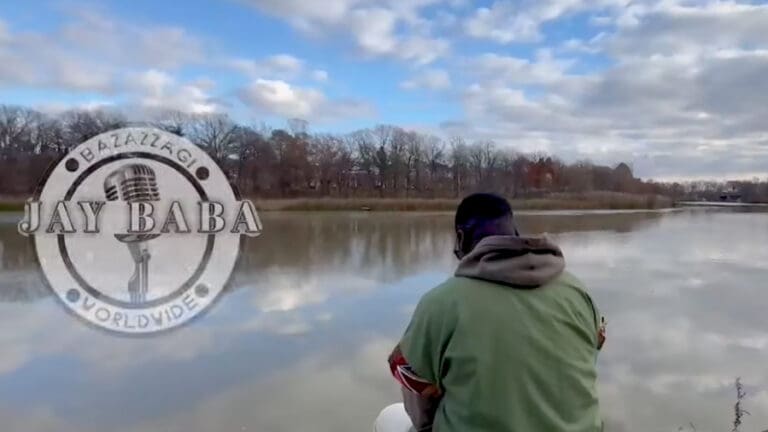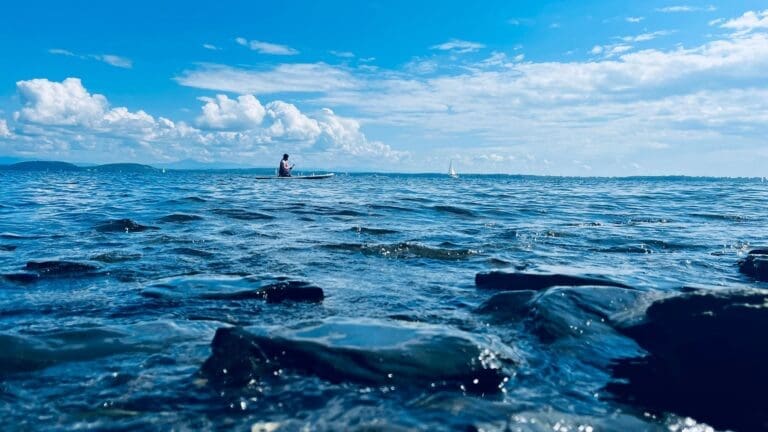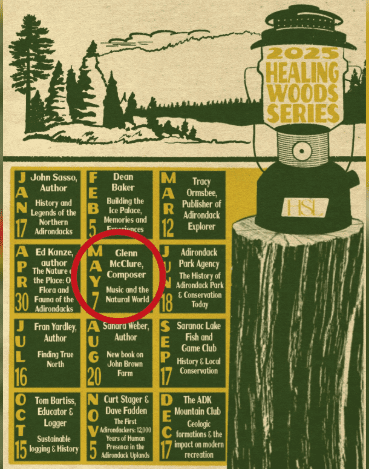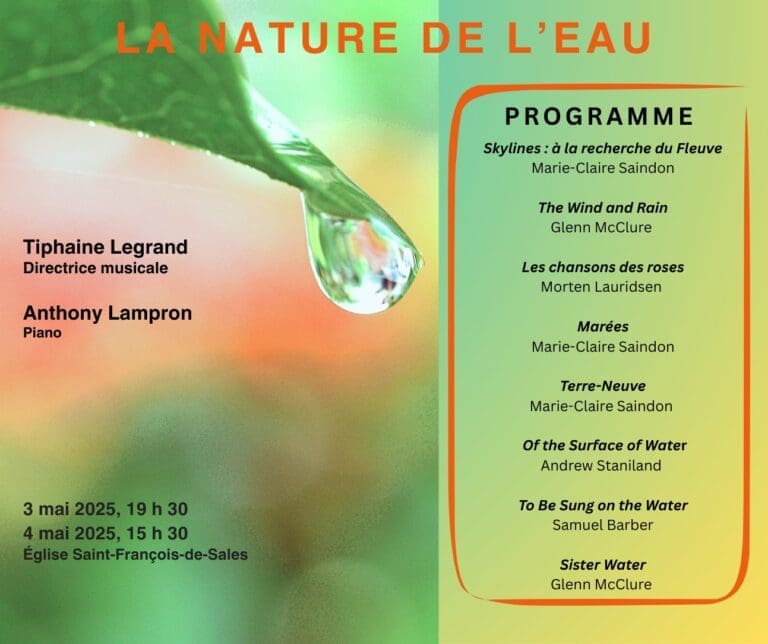Christmas at the Foot of a Volcano
My wife and I have gotten to know the local Catholic community of Sacred Heart, Na’alehu. This rural community gathers together the whole range of Hawaiians including those from indigenous heritage to those whose families originate from the US, Europe, Japan, China and the nations of Polynesia. The author James Joyce once described the Catholic Church as “Here comes everybody.” The Sacred Heart Community lives up to Joyce’s definition and more in their openness and hospitality to wanderers like us.
We just returned home from an evening of Christmas caroling around the neighborhood. The voices of adults and children were accompanied by the gentle rhythm of the Hawaiian rain. I have sung Christmas carols in the snow before, but the snow doesn’t make any sound. The range of rain sounds on our umbrellas, the ground, the leaves, and my hat made these familiar songs brand new. The music written so long ago by composers living far away gains new meaning because of nature’s unique orchestra here on the big island.

Kilauea Volcano
Last week, the Sunday readings recounted the story of Mary and Elizabeth celebrating the upcoming births of their respective children, Jesus and John. More than any other Christian holiday, Christmas celebrates the role of women and the creative force of birth in our spiritual journey. Without modern birth certificates to codify his birthday, early Christians in Roman-occupied Palestine chose the winter solstice (give or take a few days) for Jesus’ birthday. This aligned the birth of their savior with other Roman festivals of renewal. The story of a baby born during the darkest days of the year gathers meaning and momentum because it points us to the promise of Spring. From its beginning, Jesus’ life is bound up with the natural turn of seasons and the meanings we attach to the created world.
This part of the big island is the traditional home of Pele, the indigenous goddess of the volcano. She gives birth to new land through eruptions as recently as this year. She looms large in the Hawaiian imagination in ways that sometimes blur the boundaries between canonical Christianity, indigenous faith, and our scientific understandings of nature. The rumblings of the ground beneath our feet rattle our assumptions. The immense power of geology compels us to explore our small place in the larger scheme of things. It is hard to imagine anyone, from churchgoers to atheists, who could reduce the awesome forces present in this volcanic landscape to a single religious or scientific explanation. This place pushes our humanity into places that don’t easily fit into the boxes of one way of thinking or another.
The staggering power of the Kilauea volcano takes me back to other times in my life where I stood in the face of creative forces beyond my understanding. In all the ways I have embraced the tasks of fatherhood, there is no denying that at the births of my two children, I was a terrified, awestruck, helpless, cheering spectator as my wife endured the pain necessary to bring Matteo and Francesca into the world. While the verses of Genesis offer a theological explanation for the pain of childbirth, the contours of Hawai’i’s volcanic landscape proclaim a much simpler truth. The act of creation is terrifying, painful, beautiful, and necessary.

Like Mary and Elizabeth of the Gospels, Pele reminds us of the creative force of motherhood. Creating new life, either in the form of children or land, is the moment where our raw materials most closely mingles with our spirit. The physical, visceral results of creation meet the promise of new possibilities. For example, it does not take long for new plant life to take root in the contours of the cooled lava. Nurturing children and land through the relentless uncertainties and dangers, is where our humanity most closely mingles with our place in the arc of history. Our children and our land carry with them the mish mash of our successes and failures into an unwritten future that will eventually sort itself out. Just as the Gospel writers embedded Jesus’ life within the drama of the seasons, we too can search for meaning in our lives within the unfolding stories of our children and our land.
Whether you subscribe to Christianity, Judaism, Islam, or another religion, the notion of “Mother Earth” has offered a widely-held description of our relationship with the natural world. By calling the earth our “mother,” we not only celebrate the creative force of natural processes, but we also recognize how much our lives depend upon working with those processes. This lies at the heart of our current debates on global warming and environmental stewardship.
Our natural mothers and spiritual mothers also remind us to become creators. This time of the year, whether you follow a faith born in the ancient Middle East or ancient Hawai’i, or no organized religion at all, we are reminded of how difficult and important it is to create new things. Here in one chorus, Mary, Elizabeth, Pele, and Mother Earth remind me that even my small acts of creation (composing new music) require patience and endurance that stretch beyond my own comfort. They remind me that the forces that bring new things into the world are not my own, but are part of a larger story that binds us together as co-creators of a future yet to be written.

